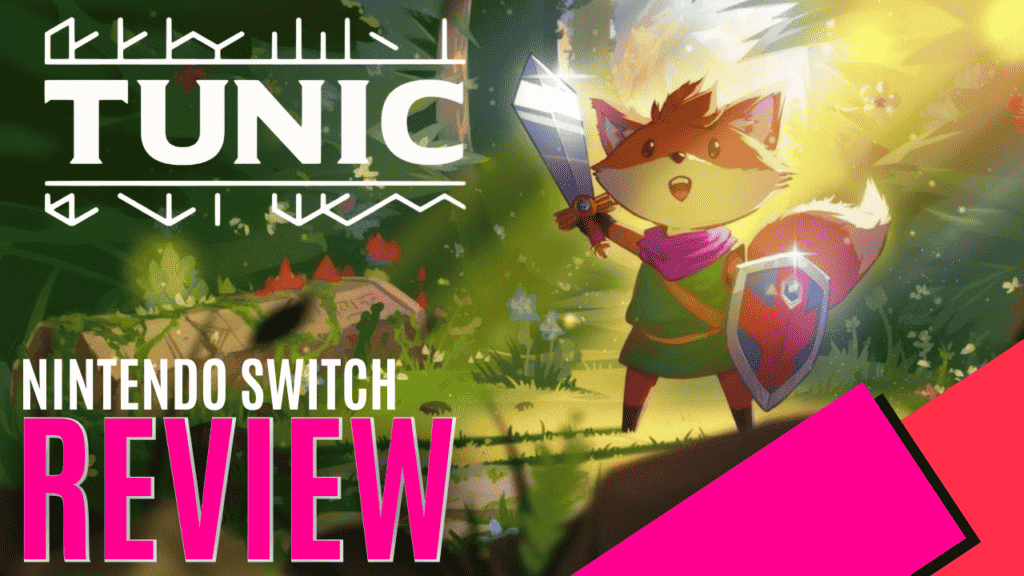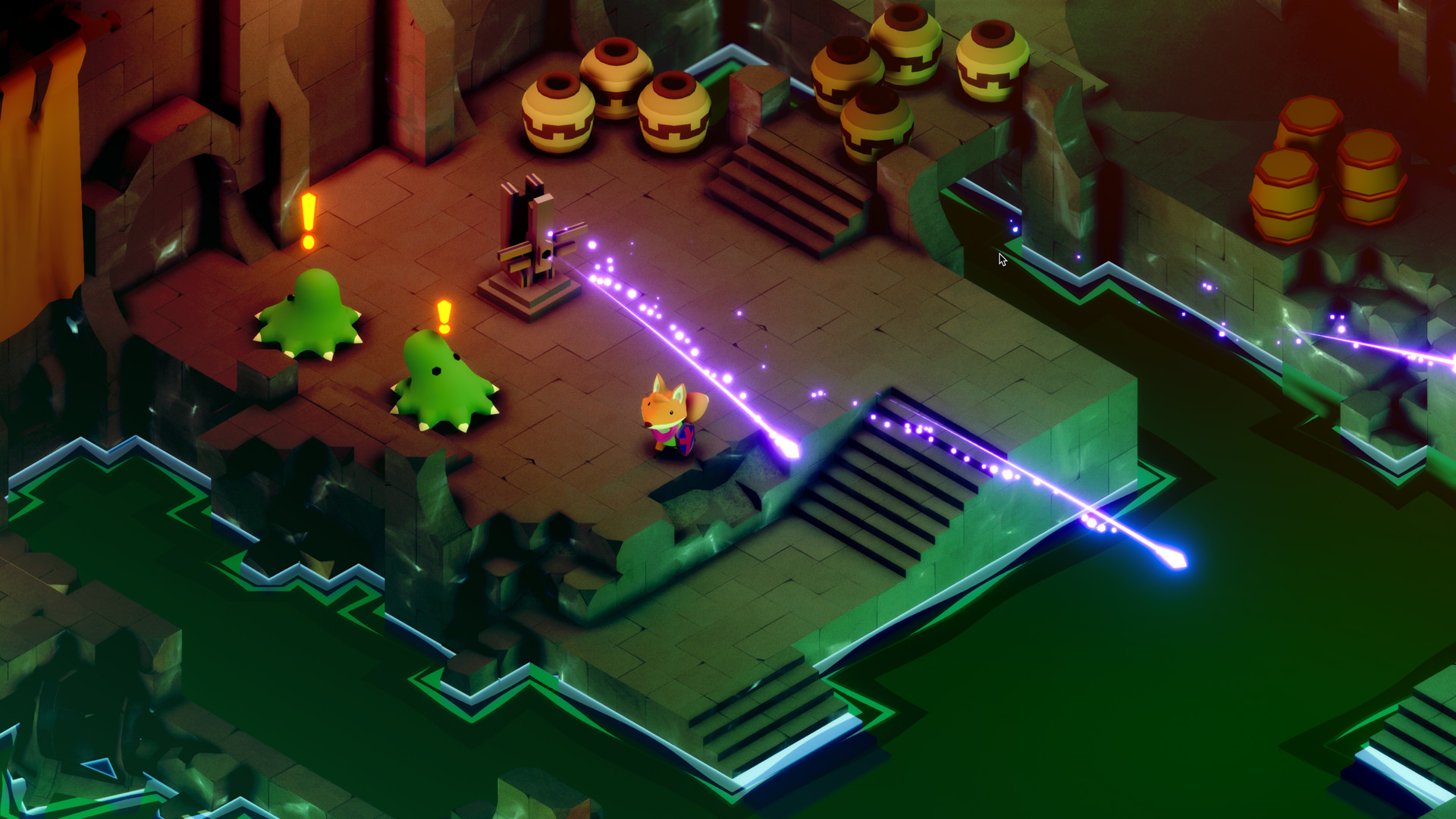
With a delay in release time, Tunic has finally made its way to the Nintendo Switch. Hearing favourable comments on the title, I have always been eager to give it a go, but, as more and more games vie for my attention, I didn’t see an opportunity to play Tunic anytime soon. Thankfully, developers Isometricorp, and publisher, Finji, have brought Tunic to the Nintendo Switch, allowing a more portable way to play. So, was the wait and having Tunic available in a portable format worth it?
Almost every outlet in the gaming space has given a review of Tunic, so there is probably very little in the way of new information I can offer you, but Tunic, across the board, has garnered high praise and scores, and I wholeheartedly agree with those critiques. So, for those wanting just the rundown of the Switch’s performance with Tunic, you can skip ahead to the graphical section and continue reading from there. I’ll give you a friendly wave so you know where to look. For everyone else, read on for the plot and gameplay.
Playing as an anthropomorphic fox, you awaken on a beach with nothing but a linear path forward, and as you explore the environment, you will find a temple entrance in which to enter. Inside, you will meet a large ghostly fox that appears to be trapped, and it indicates that three items are required to break the prison, but that is all you are given in the way of a goal or plot. Most of the story unfolds as you adventure around and discern information from pages found throughout the world, but these little pieces of information are completely up to your own interpretation.
Tunic is an action-adventure game that borrows a few other gameplay mechanics from other games, which, if you have read some of my other reviews, can really damage a game by not doing it correctly – Mato Anomalies and Lost Epic, I’m looking at you.

Tunic, however, incorporates the adventure and discovery of Zelda, the traversal and environmental unlocking of Metroidvania, and the recursive elements of combat in a Souls-like. All these mechanics are designed flawlessly and perfectly complement each other, without taking away Tunic’s individuality.
The adventure and discovery unfold with the limitation of discernible information, most of which is in an illegible script. The found script comes from pages you discover in the environment, and pages are displayed like a user manual, with hints and tips on how to play, things you can find, and assistance with puzzles. This keeps you pressing forward with delight, wanting to find the pages unlocking more titbits. Because of this lust for discovery, you adventure around searching for hidden alcoves and search pathways for loot, and finding something and/or solving a puzzle is an immediate euphoric hit. More than once I would hold my Switch aloft cheering with a hearty “YES!”
The adventure and discovery also lend themselves perfectly to showing you inaccessible places in the environment. The Metroidvania part fits so seamlessly with how Tunic encourages you to explore, and as you progress, you will get new equipment and unlock ways to traverse those inaccessible areas. Normally, having to backtrack over previously travelled areas can become a chore, but Tunic has made it fun and exciting.
Combat is recursive, meaning if you die, you are resurrected at the last fox shrine you visited. Visiting a fox shrine not only gives you this resurrection point, but also refills all your health, magic, and healing potions. It also resurrects all the defeated enemies, except bosses, so choosing when or not to use a shrine is important.

All the enemies and bosses have clear attack patterns and tells, allowing you to learn and defeat them through patience and practice, but, like all Souls-like combat systems of resource management, there will be times of pure frustration when you die to the same enemy for the 100th time, and the desire to launch my Switch across the room as another killing blow came down upon my poor little fox was all too real, but with perseverance, victory is sweet, leading back to the adventure and discovery, closing a perfect gameplay loop.
/Wave. Hey down here! I’m glad you stuck around to join us for what Tunic is graphically on the Switch. The polygonal style used gives Tunic a very cute and inviting persona full of comfort and ease. The environment looks soft and velvety to the touch but, as explained in the gameplay section, that persona is a ruse. Playing in the handheld mode sometimes made navigating the environment a little difficult as the smaller screen hid the finer details hinting at a secret. There was also a weird blurry/haziness, regardless of playing handheld or docked, and I can only assume the resolution hasn’t been calibrated just right. With no way to adjust it yourself, it would be unfortunate if this is a feature of the game.
Sound effects were exceptional, allowing clear tones to indicate what was happening either in the environment or attacks coming from an enemy. The music changes and crescendos in accordance with the action, and diminuendos back to a calm when exploring. The music is very complimentary without hiding or overshadowing other important sounds or what is visually displayed.
So, to answer the question at the beginning of this review, has the wait and having Tunic available in a portable format worth it? The answer is yes. The synergy of gameplay mechanics and thoughtful use of music and sound make Tunic a highly recommended game to play. If you have played and enjoyed Tunic and want to play it again in a more accessible mode, then what the Switch has on offer is great. If you have ever considered playing Tunic, and only have a Nintendo Switch, then pick it up. You will not be disappointed.

The Good
- Portable Tunic
- Clear sound effects
- Complimentary music
- Self-interpreted storyline
- Perfect synergy of gameplay mechanics
The Bad
- Screen Blurry/Haziness








